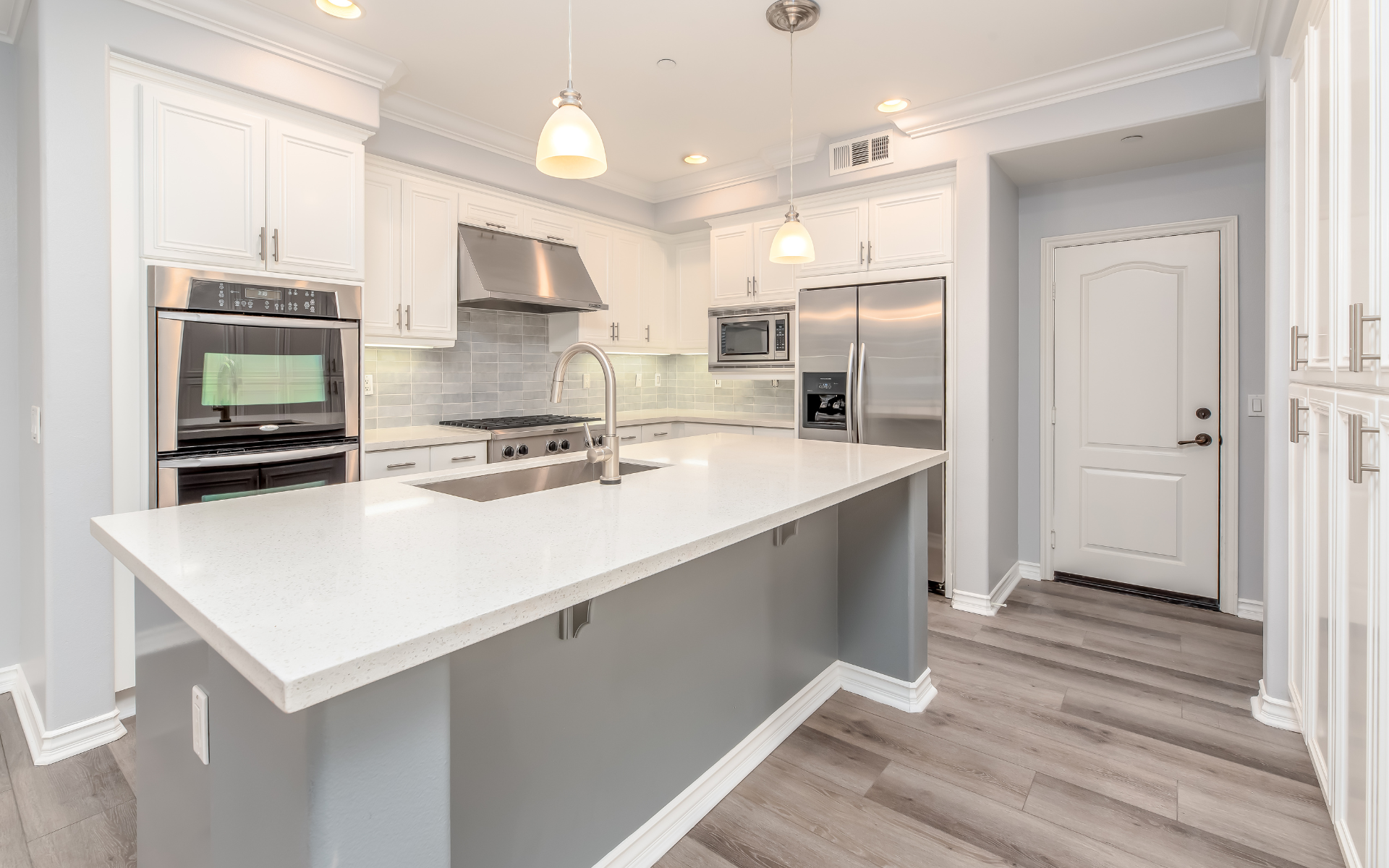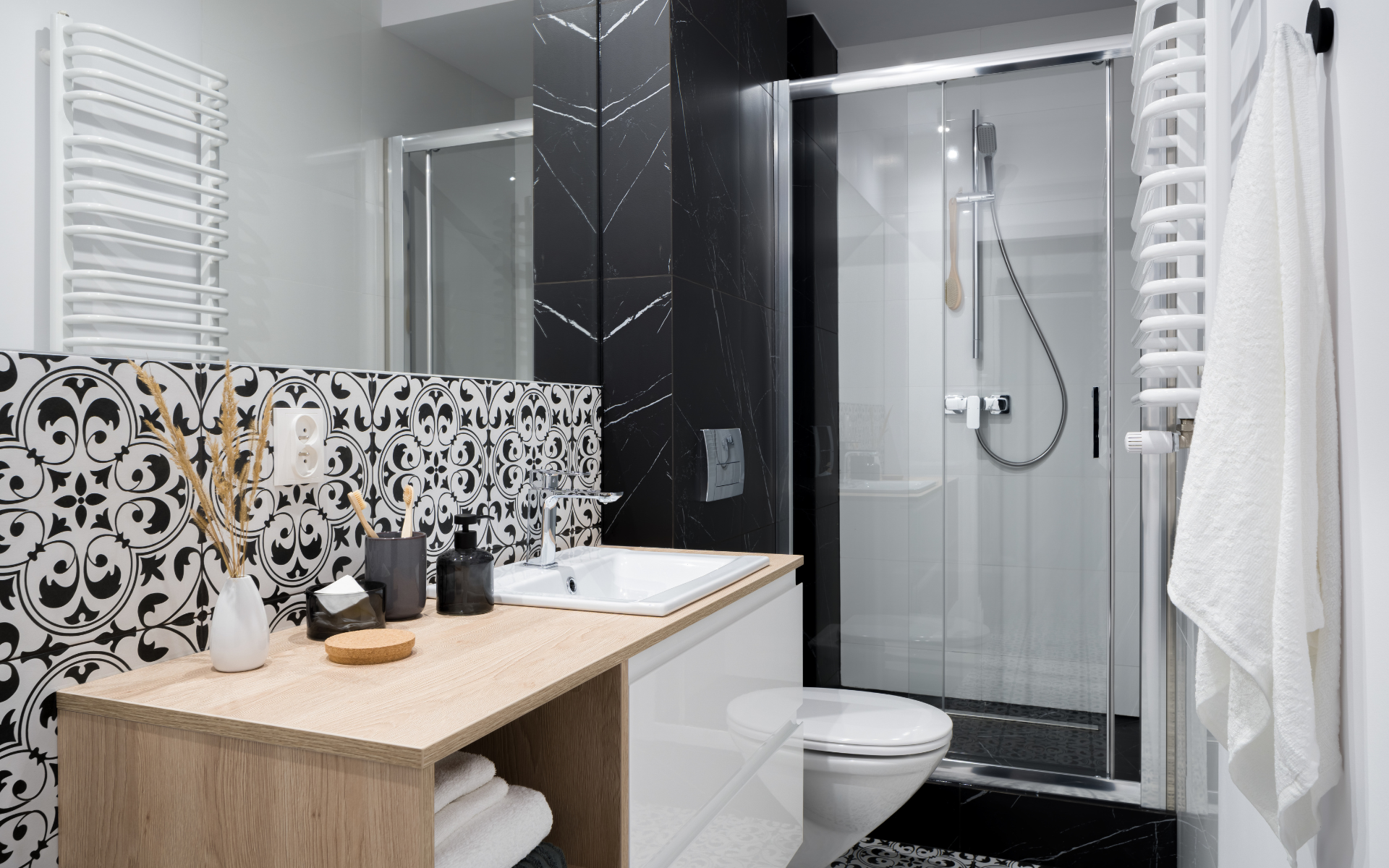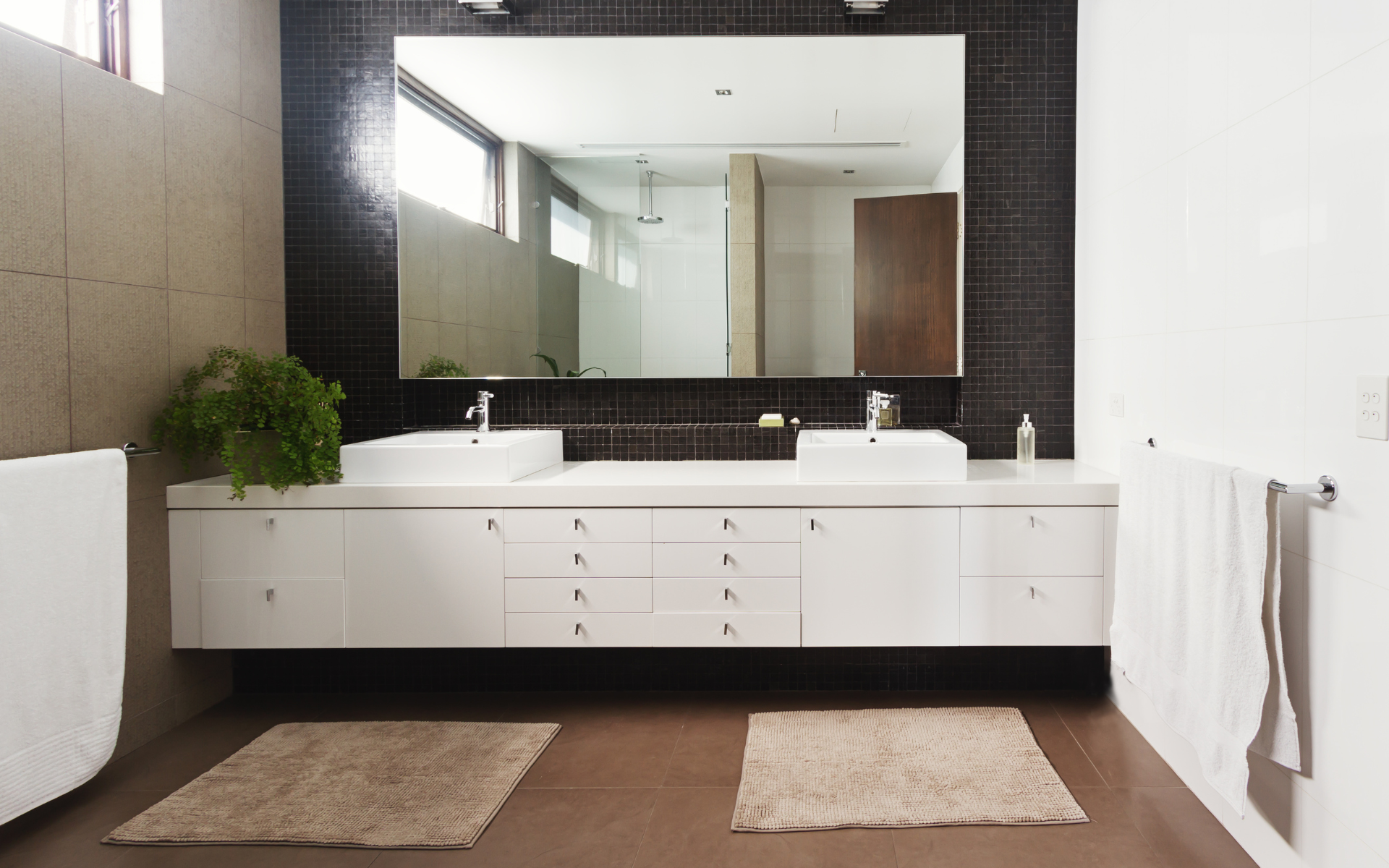Your kitchen tells a story. Maybe it’s the chaos of Tuesday morning breakfast rushes, or the laughter echoing during weekend dinner parties. Whatever your story, kitchen design styles can help you create a space that actually fits your life instead of fighting against it every single day.
Kitchen and bath remodeling has exploded with fresh possibilities lately. Gone are the days when you had three boring options. Now? You can go full minimalist zen or embrace maximalist farmhouse charm. You can blend industrial grit with cottage sweetness. The rules are basically thrown out the window, and honestly, it’s about time.
Table of Contents
Why Style Actually Matters
Here’s what nobody tells you about kitchen styles: they’re not just pretty pictures in magazines. Different styles solve different problems. Need to hide clutter? Some styles excel at storage. Love hosting dinner parties? Other styles create natural conversation flows.
Take the morning coffee ritual, for example. If you’re a pour-over perfectionist, you’ll want completely different design elements than someone who hits the Keurig button and runs. One person needs counter space and specialty storage. The other just wants the machine plugged in somewhere convenient.
Some families cook elaborate Sunday dinners. Others survive on takeout and cereal. Your kitchen style should match your reality, not some Pinterest fantasy of who you think you should be.
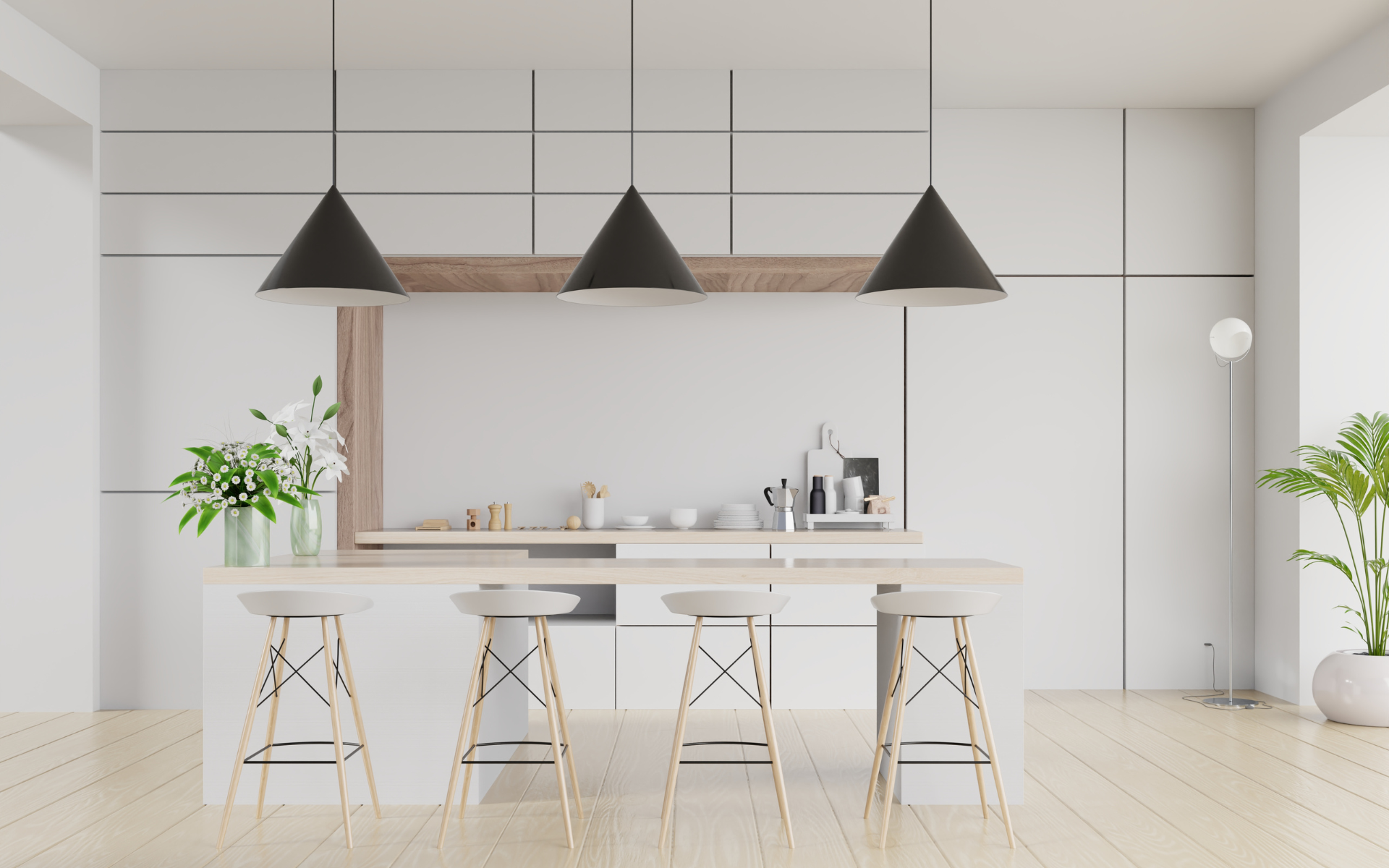
1. Modern Style Kitchens
Modern kitchens are like that friend who always looks effortlessly put together. Everything has a place. Nothing is extra. Flat panel cabinets line up like soldiers, and countertops stretch for miles without a single coffee mug in sight.
Sounds sterile? It doesn’t have to be. Modern style kitchens can feel warm when you choose the right materials. Natural wood elements soften all those clean lines. Stainless steel appliances reflect light beautifully. Cool tones create a backdrop that actually makes your colorful dishes and fresh flowers pop.
Want the modern look but worried about it feeling cold? Add texture through stone countertops or interesting light fixtures. One dramatic pendant over your kitchen island can completely change the mood.
2. Contemporary Kitchen Design
Contemporary style is like fashion for your kitchen. It changes, evolves, adapts to what families actually need today. Five years ago, everyone wanted white cabinets. Now? People are going bold with navy blues and forest greens.
These kitchens blend materials like crazy. Wood meets metal meets glass. It shouldn’t work, but somehow it totally does. You might have sleek cabinets paired with a live-edge wood island. Or traditional subway tile backsplash with ultra-modern appliances.
Contemporary design embraces contradiction. Want smart technology hidden behind vintage-style cabinet fronts? Go for it. Need a charging station that doesn’t look like a charging station? Contemporary designers have solutions.
The best part? Contemporary style gives you permission to break rules and mix things up.
3. Traditional Kitchen Design
Traditional kitchen design draws inspiration from classic European and American styles, creating spaces that feel timeless and elegant. Kitchens feature rich wood cabinetry with raised panel doors, often finished in warm tones that add instant character to the space.
Classic elements like crown molding, decorative hardware, and furniture style details give traditional kitchens their distinctive charm. Color palette typically includes warm, inviting tones, creamy whites, soft golds, and rich wood stains that create a cozy, welcoming atmosphere perfect for family gatherings.
Traditional kitchens often include formal dining areas within the kitchen space, substantial kitchen islands that serve as both prep space and casual dining spots. Designs prioritize comfort and functionality maintaining an sense of timeless elegance that never goes out of style.
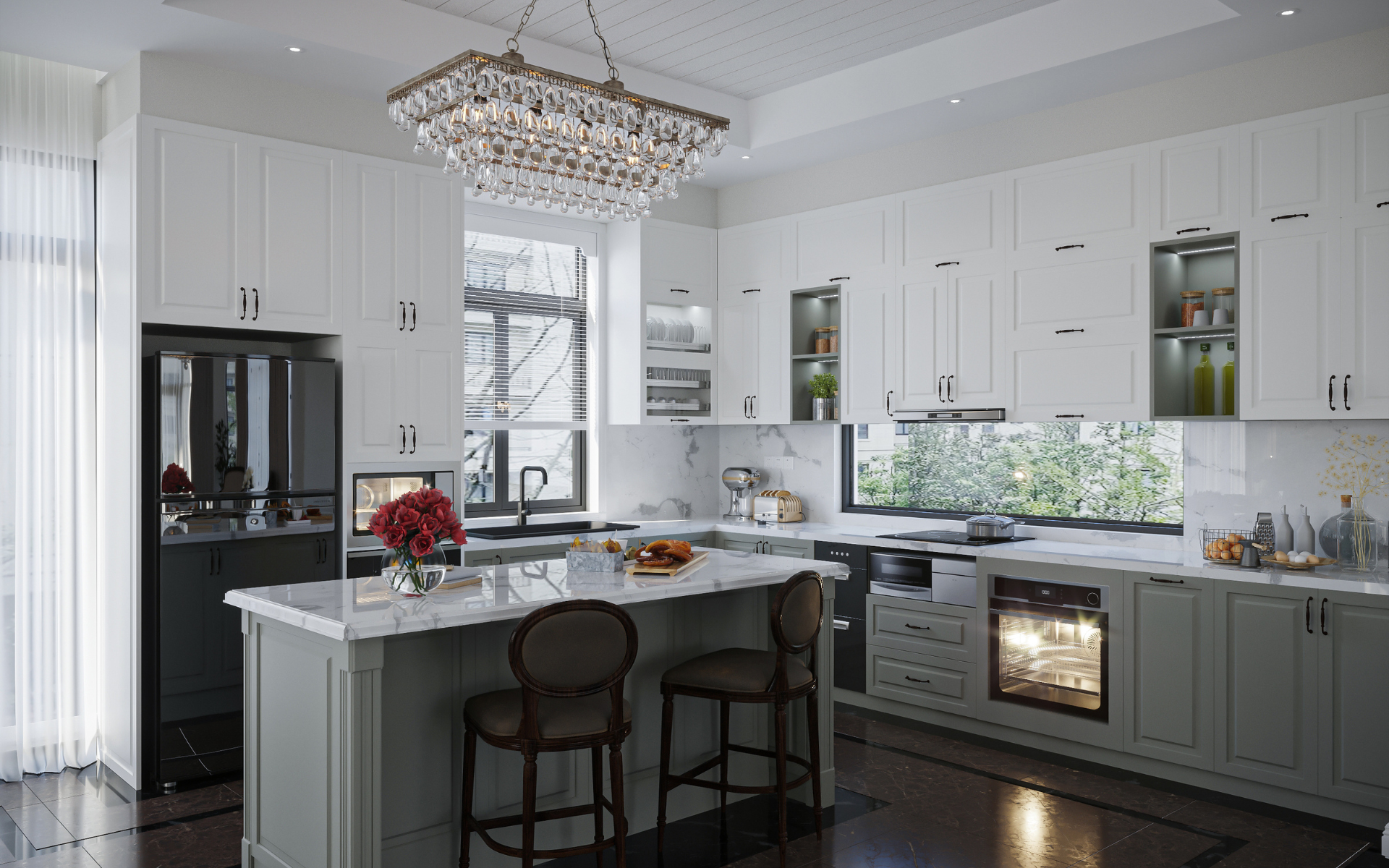
4. Transitional Kitchen Style
Transitional design bridges the gap between traditional warmth and contemporary sophistication, creating kitchens that feel both classic and current. Style works particularly well for families who appreciate traditional elements but want a more streamlined, updated approach to kitchen design.
Cabinetry in transitional kitchens often features simplified versions of traditional details, clean lines with subtle raised panels, or simple shaker-style doors that feel fresh yet familiar. A combination of materials might include both painted and stained wood finishes, creating visual interest without overwhelming the space.
Kitchens typically feature neutral color palettes that feel soothing and sophisticated, natural materials like stone countertops and hardwood flooring, providing texture and warmth. Overall aesthetic balances classic charm with modern functionality.
5. Farmhouse and Rustic Kitchen Style
Farmhouse kitchens capture the warmth and simplicity of country living, emphasizing natural materials and comfortable functionality over formal elegance. Spaces often feature natural wood beams, shiplap walls, and classic elements like apron front sinks that reference agricultural heritage.
Rustic kitchen design embraces imperfections and natural textures, reclaimed wood surfaces, and wrought iron hardware, adding authentic character. Open shelving displays everyday dishes and vintage collectibles, and large kitchen islands provide both workspace and casual dining areas for family meals.
Color palette in farmhouse kitchens typically includes warm whites, soft grays, and natural wood tones that create a cozy, lived-in feeling. Kitchens prioritize functionality and comfort, ample storage space for everything from cast iron cookware to seasonal preserving supplies.
6. Scandinavian Kitchen Design
Scandinavian style embraces the Nordic principles of simplicity, functionality, and connection to natural beauty. Kitchens feature light wood cabinetry, often in birch or pine, paired with crisp white surfaces that maximize the impact of natural light.
Aesthetic emphasizes clean lines and minimal ornamentation, flat panel cabinets, and simple hardware that doesn’t compete with the natural beauty of the wood grain. Cool tones dominate the color palette, whites, light grays, and pale blues that echo the Nordic landscape.
Functionality drives every design decision in Scandinavian kitchens, clever storage solutions built into every available space. Overall effect feels calm and organized, natural textures like linen and wool adding warmth to the minimalist aesthetic.
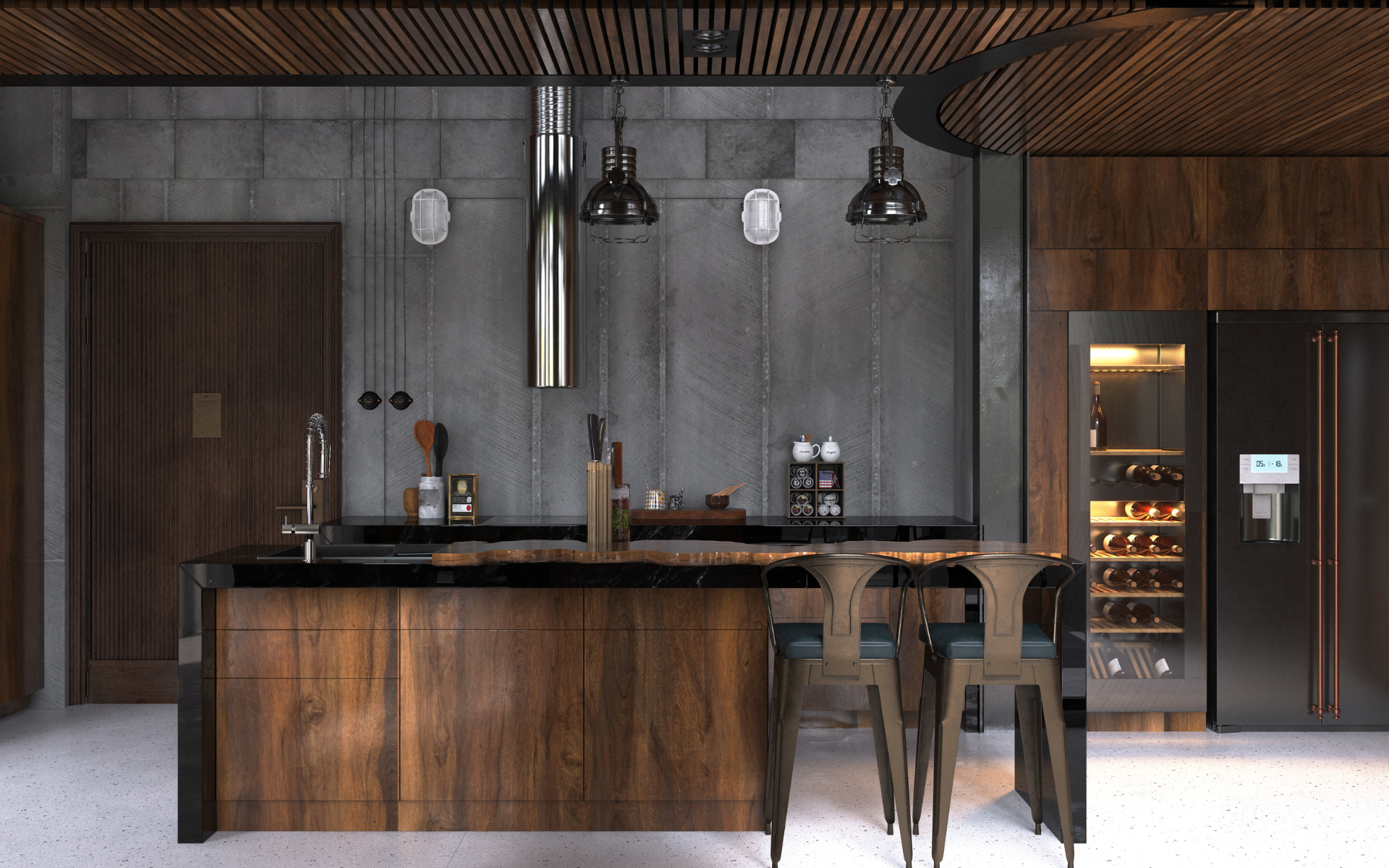
7. Industrial Kitchen Style
Industrial design brings the raw appeal of converted warehouses and loft spaces into residential kitchens, celebrating exposed materials and utilitarian functionality. These kitchens often feature exposed brick walls, concrete countertops, and metal elements that reference industrial heritage.
Stainless steel appliances feel right at home in industrial kitchens, often paired with open shelving made from reclaimed wood or metal brackets. The lighting typically includes pendant fixtures with metal shades or exposed Edison bulbs that enhance the raw, unfinished aesthetic.
The color palette tends toward neutral earth tones. Grays, browns, and blacks punctuated by the natural warmth of wood elements and the cool gleam of metal surfaces. These kitchens feel honest and unpretentious, celebrating function over decoration.
8. Mediterranean Kitchen Style
Mediterranean design captures the warmth and romance of coastal European living, with rich colors, natural materials, and decorative patterns that feel both elegant and relaxed. These kitchens often feature warm wood cabinetry with decorative details like carved corbels and furniture-style feet.
Natural stone surfaces, including granite or marble countertops, provide both beauty and durability, while hand-painted tiles create stunning backsplashes with intricate patterns and vibrant colors. Wrought iron hardware and light fixtures add authentic period details.
The color palette draws inspiration from Mediterranean landscapes. Warm terracotta, deep blues, golden yellows, and rich greens that create spaces full of personality and warmth. These kitchens often include dining areas with substantial wooden tables perfect for long, leisurely meals.
9. Cottage Kitchen Design
Cottage style creates cozy, charming kitchens that feel like they belong in a storybook, with painted cabinetry, vintage-inspired hardware, and soft, romantic details. These kitchens often feature glass-front cabinets that display pretty dishware and collectibles.
Beadboard paneling, open shelving, and vintage-style appliances contribute to the cottage aesthetic, while soft color palettes in pastels or muted tones create a soothing, feminine atmosphere. Natural materials like butcher block countertops add warmth and functionality.
Cottage kitchens typically include charming details like plate racks, vintage signs, and fresh flowers that enhance the homey, welcoming feeling. The overall design prioritizes comfort and charm over sleek sophistication.
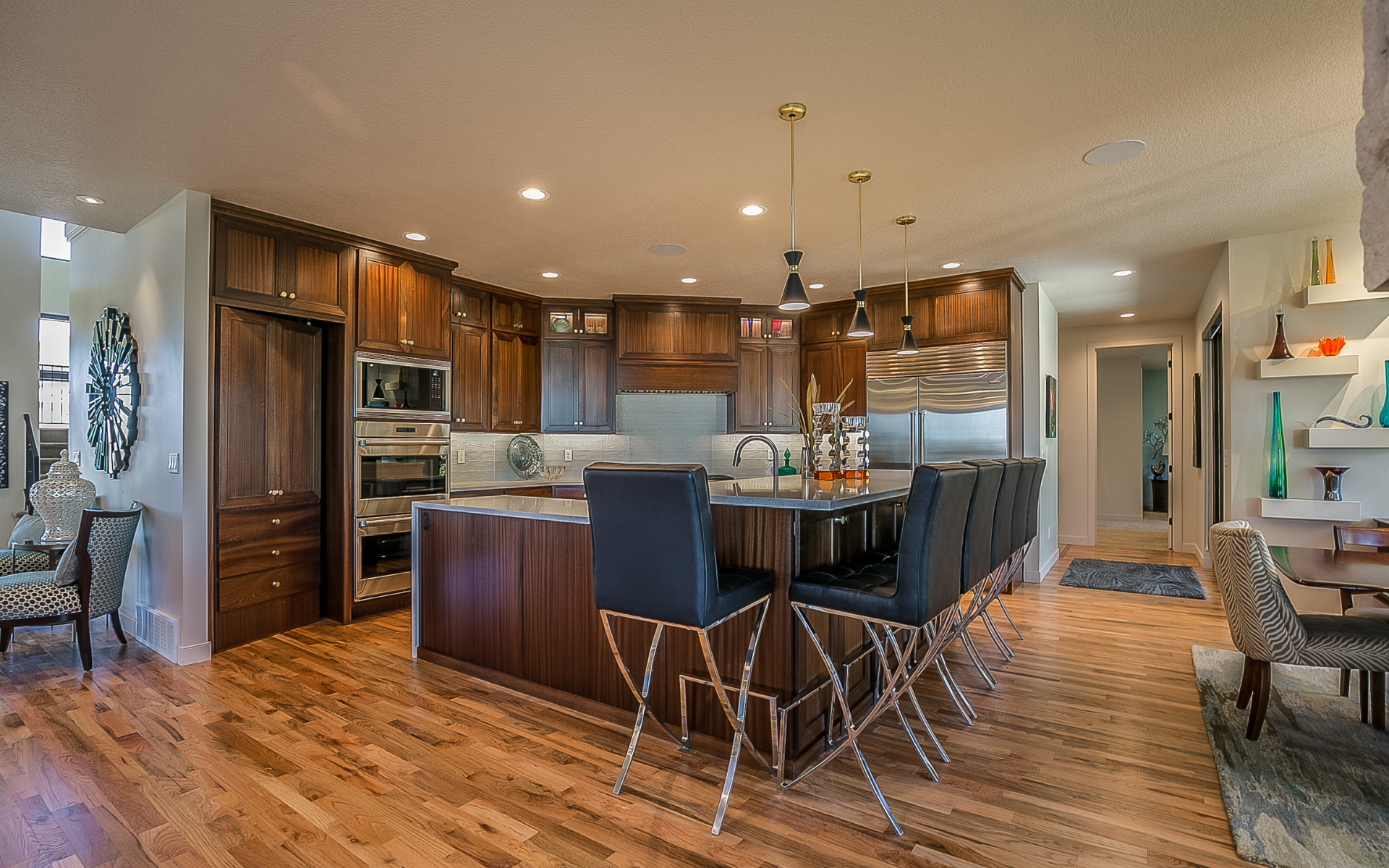
10. Mid-Century Modern Kitchen Style
Mid-century modern design celebrates the optimistic, forward-looking aesthetic of the 1950s and 1960s, with clean lines, geometric shapes, and a bold use of color and materials. These kitchens often feature flat-panel cabinets in rich wood tones or bold colors.
The design emphasizes horizontal lines and open floor plans, often incorporating breakfast bars or peninsula seating that creates casual dining areas. Large windows and skylights flood the space with natural light, while carefully chosen accessories add pops of period-appropriate color.
Materials typically include natural wood, laminate surfaces, and metal accents that reference the space-age optimism of the era. The overall effect feels both retro and timeless, celebrating innovation and style.
11. Eclectic Kitchen Design
Eclectic style gives homeowners permission to mix and match elements from different design traditions, creating kitchens that feel personal and unique. These spaces might combine vintage cabinets with contemporary countertops, or traditional elements with unexpected color choices.
The key to successful eclectic design lies in finding common threads. Perhaps a consistent color palette or repeated materials. That ties disparate elements together into a cohesive whole. This approach works particularly well for families who have collected pieces over time or want to incorporate family heirlooms.
Eclectic kitchens often feature interesting combinations of textures, patterns, and styles that create visual interest without feeling chaotic. The overall effect should feel intentional and curated rather than random.
12. Minimalist Kitchen Design
Minimalist design strips away everything non-essential, creating kitchens that feel calm, organized, and effortlessly elegant. These spaces feature flat panel cabinets with hidden hardware, often in white or light wood tones that enhance the sense of spaciousness.
Storage solutions are cleverly concealed, with built-in appliances and hidden pantries that maintain clean lines and uncluttered surfaces. The color palette typically includes neutral tones that feel soothing and sophisticated.
Every element in a minimalist kitchen serves a purpose, with high-quality materials and excellent craftsmanship compensating for the lack of decorative details. The overall effect feels serene and sophisticated.
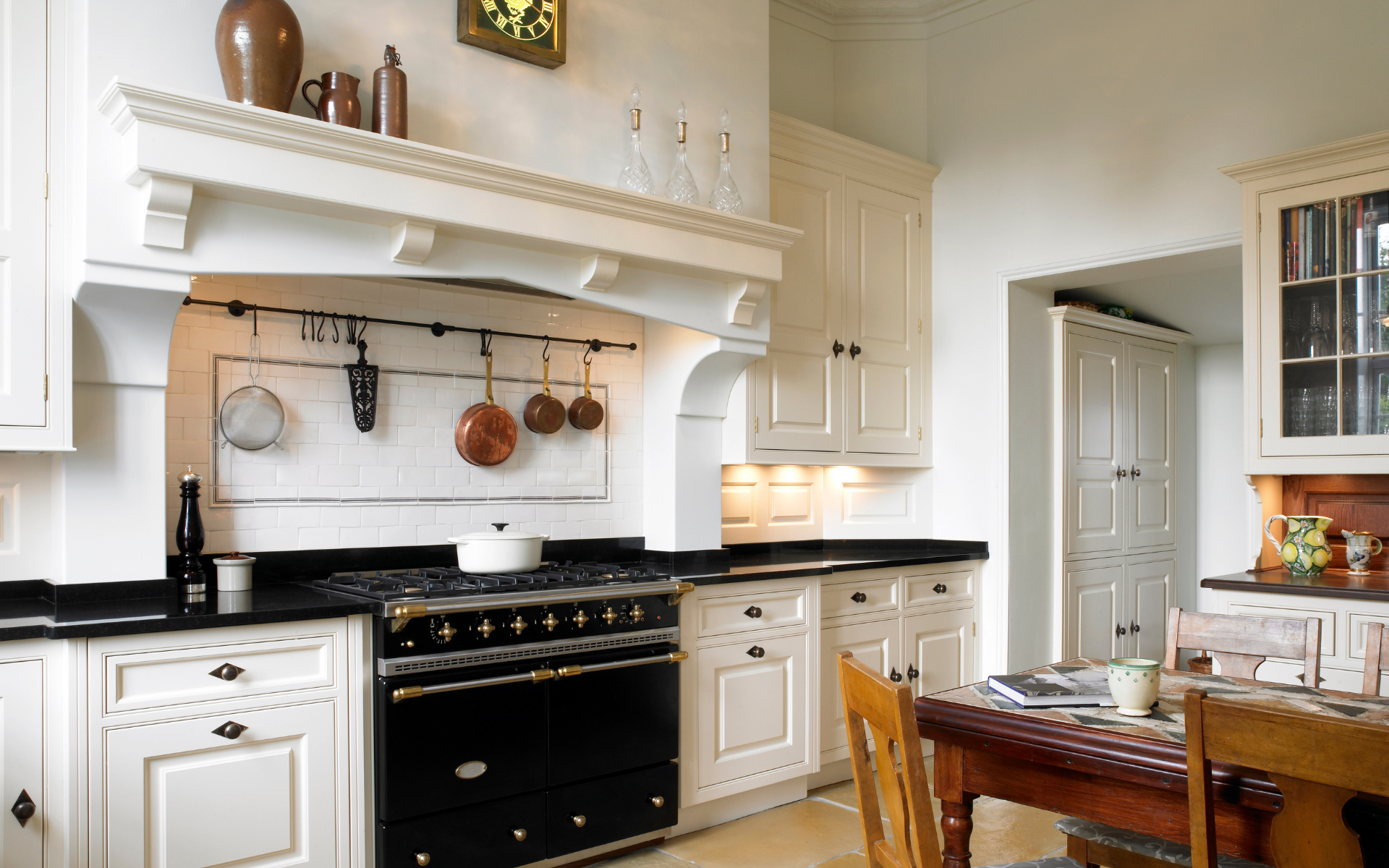
13. French Country Kitchen Style
French country design captures the romance and elegance of rural French homes, with ornate details, rich materials, and sophisticated color palettes. These kitchens often feature painted cabinetry with decorative moldings and furniture-style details.
Natural materials play a key role, with stone countertops, terra cotta tiles, and wrought iron hardware adding authentic period details. The color palette typically includes soft blues, warm yellows, and creamy whites that feel both elegant and welcoming.
French country kitchens often include formal dining areas with substantial wooden tables and upholstered seating that encourage long, leisurely meals. Decorative elements like topiaries, copper pots, and vintage linens enhance the romantic atmosphere.
14. Art Deco Kitchen Style
Art Deco design brings the glamour and sophistication of the 1920s and 1930s into contemporary kitchens, with bold geometric patterns, rich materials, and luxurious details. These kitchens often feature high gloss finishes, metallic accents, and dramatic lighting.
The color palette typically includes sophisticated combinations. Black and white with gold accents, or rich jewel tones that feel both dramatic and elegant. Materials like marble, brass, and glass add to the luxurious feeling.
Art Deco kitchens often include statement elements like patterned backsplashes, geometric tile work, or dramatic light fixtures that serve as focal points in the design.
15. Bohemian Kitchen Style
Bohemian design celebrates creativity, color, and global influences, creating kitchens that feel artistic and unconventional. These spaces often feature mix-and-match cabinetry, vibrant tile work, and collections of interesting objects from around the world.
Rich textures, warm earth tones, and gold accents create spaces that feel exotic and welcoming. Open shelving displays colorful dishware, spices, and cooking implements that become part of the decorative scheme.
Bohemian kitchens often incorporate vintage or handmade elements, with Persian rugs, hanging plants, and artwork that reflect the homeowner’s travels and interests.
Choosing Your Perfect Kitchen Design Style
The best kitchen design styles work for your specific lifestyle, budget, and home architecture. Consider how you actually use your kitchen. Do you need lots of prep space for elaborate cooking projects, or is your kitchen primarily a coffee and light meal zone? Do you entertain frequently, or is this mainly a family workspace?
Think about the relationship between your kitchen and dining room, and how the design elements can create better flow between spaces. Consider practical needs like storage, lighting, and the relationship between different work zones within the kitchen layout.
The most successful kitchen designs blend multiple influences rather than strictly adhering to a single style. You might love the warmth of traditional design but need the functionality of contemporary storage solutions. Perhaps you’re drawn to the simplicity of Scandinavian style but want the character of natural wood elements.
Creating Timeless Appeal
While trends come and go, the best kitchen design styles have staying power because they address fundamental human needs for beauty, functionality, and comfort. Focus on quality materials, good proportions, and thoughtful details that will remain appealing for years to come.
Consider how your chosen style will work with your home’s existing architecture and how it can enhance rather than fight against your house’s natural character. The most beautiful kitchens feel like they belong in their specific location rather than looking like they could be anywhere.
Remember that small details make big differences in how a kitchen feels. Cabinet hardware, light fixtures, and even the kitchen sink can significantly impact the overall aesthetic. Choose these elements carefully to support your chosen design style.
Making It Happen
Once you’ve identified the kitchen design styles that appeal to you, work with experienced professionals who understand how to translate inspiration into functional reality. An interior designer can help you navigate the countless choices involved in kitchen design, ensuring that every decision supports your overall vision.
Consider creating a mood board or collection of inspiration images that capture the feeling you want your kitchen to have. This helps ensure that all the design elements work together to create a cohesive, beautiful space that truly reflects your taste and lifestyle.
Ready to create the kitchen of your dreams? Dupont Design Center specializes in helping homeowners navigate the world of kitchen design styles to find the perfect combination of beauty and functionality for their unique needs. Contact us today to start planning your ideal kitchen transformation.

